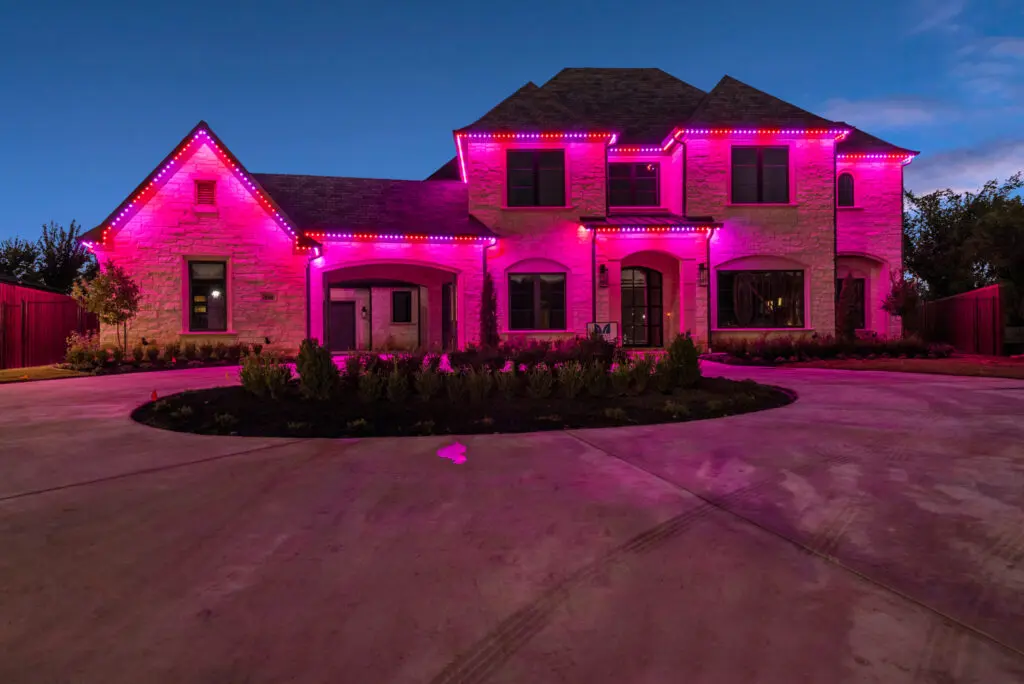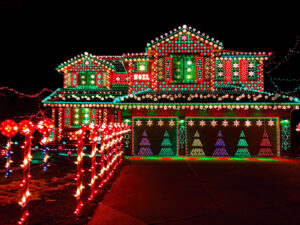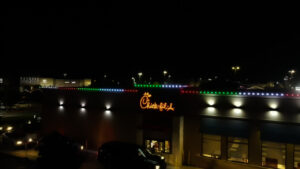As Valentine’s Day approaches, many people adorn their homes and neighborhoods with twinkling Valentine’s lights to celebrate the season of love. While these festive decorations add charm and warmth to the city, it’s important to consider their environmental impact. From energy consumption to waste generation, Valentine lights can have both positive and negative effects on the environment.
In this guide, we’ll explore the environmental impact of Valentine lights in Dallas, highlighting ways to minimize their ecological footprint and promote sustainability during the holiday season.
Energy Consumption:
One of the most significant environmental impacts of Valentine lights in Dallas is their energy consumption. Traditional incandescent lights and even some LED lights can be energy-intensive, especially when left on for extended periods. As homeowners decorate their homes and yards with elaborate light displays, collective energy usage can put a strain on the local power grid and contribute to increased greenhouse gas emissions.
To mitigate this impact, homeowners can opt for energy-efficient LED lights, which consume up to 80% less energy than incandescent bulbs and have a longer lifespan, reducing the need for frequent replacements and further lowering energy usage.
Light Pollution:
Another environmental concern associated with Valentine’s Lights in Dallas is light pollution. Excessive artificial lighting can disrupt natural ecosystems, interfere with wildlife behavior, and negatively impact human health. In urban areas like Dallas, where light pollution is already a significant issue, the addition of Valentine lights can exacerbate the problem, obscuring the night sky and disrupting the circadian rhythms of both humans and animals.
To minimize light pollution, homeowners can use timers, motion sensors, or special Valentine outdoor lights in Dallas to control when their lights are illuminated, avoid over-illuminating their properties, and opt for warm-colored LED bulbs, which produce less glare and are less disruptive to wildlife.
Resource Consumption:
The production and disposal of Valentine’s Day lights Dallas TX also have resource consumption implications. The manufacturing process for lights involves the extraction of raw materials, such as metals and plastics, as well as the use of water, energy, and chemicals.
Additionally, many Valentine lights are made with non-biodegradable materials, such as PVC and aluminum, which can take hundreds of years to decompose in landfills. To minimize resource consumption and waste generation, homeowners can choose eco-friendly Valentine lights made from sustainable materials, such as bamboo or recycled plastic, and prioritize products with minimal packaging and recyclable components.
Waste Generation:
Waste generation is another environmental impact of Valentine Lights. Each year, millions of pounds of broken, outdated, or unwanted lights end up in landfills, where they contribute to pollution and take up valuable space.
To reduce waste generation, homeowners can extend the lifespan of their Valentine lights by properly maintaining and storing them when not in use, repairing broken lights instead of replacing them and donating unwanted lights to organizations that recycle or repurpose them.
Additionally, some manufacturers offer take-back programs or recycling initiatives for old lights, allowing consumers to dispose of them responsibly and divert them from landfills.
Carbon Footprint:
The carbon footprint of Valentine lights in Dallas encompasses not only their energy consumption but also the emissions associated with their production, transportation, and disposal. From the extraction of raw materials to the manufacturing process to the distribution of finished products, every stage of the supply chain contributes to greenhouse gas emissions and climate change.
To reduce their carbon footprint, homeowners can opt for locally sourced Valentine lights to minimize transportation emissions, choose products with minimal packaging to reduce waste and invest in energy-efficient lights to lower energy usage and emissions during the holiday season.
Community Engagement and Education:
Despite the environmental challenges posed by Valentine Lights in Dallas, there are opportunities for community engagement and education to promote sustainability during the holiday season. Local organizations, government agencies, and environmental groups can collaborate to raise awareness about the environmental impact of Valentine lights and provide resources and incentives for homeowners to adopt eco-friendly practices.
From hosting workshops on sustainable decorating tips to organizing recycling drives for old lights, these initiatives can empower residents to make more informed choices and reduce their ecological footprint while still enjoying the festive spirit of the season.
Policy and Regulation:
Policy and regulation also play a crucial role in addressing the environmental impact of Valentine lights in Dallas. Local governments can implement measures to incentivize eco-friendly practices, such as offering tax credits or rebates for energy-efficient lighting upgrades, establishing guidelines for sustainable holiday decorating, and enforcing restrictions on light pollution in sensitive areas.
By enacting policies that prioritize environmental sustainability and encourage responsible consumption and disposal practices, policymakers can help mitigate the environmental impact of Valentine lights and promote an eco-friendly approach to holiday celebrations in Dallas and beyond.
Innovation and Technology:
Finally, innovation and technology offer promising solutions for reducing the environmental impact of Valentine lights in Dallas. From advancements in LED lighting technology to the development of biodegradable materials for light fixtures and decorations, researchers and manufacturers are continually exploring new ways to make holiday decorating more sustainable.
By investing in eco-friendly lighting options, adopting smart lighting systems that optimize energy usage, and embracing circular economy principles that minimize waste and resource consumption, Dallas can lead the way in creating a more sustainable and environmentally responsible approach to holiday lighting.
Conclusion:
The environmental impact of Valentine lights is a multifaceted issue that requires thoughtful consideration and proactive measures to address. From energy consumption and light pollution to resource consumption and waste generation, Valentine lights have both positive and negative effects on the environment.
By adopting eco-friendly practices, investing in energy-efficient lighting options, and promoting community engagement and education, Dallas can minimize the environmental impact of Valentine lights and create a more sustainable approach to holiday decorating that preserves the beauty of the season while protecting the planet for future generations.








